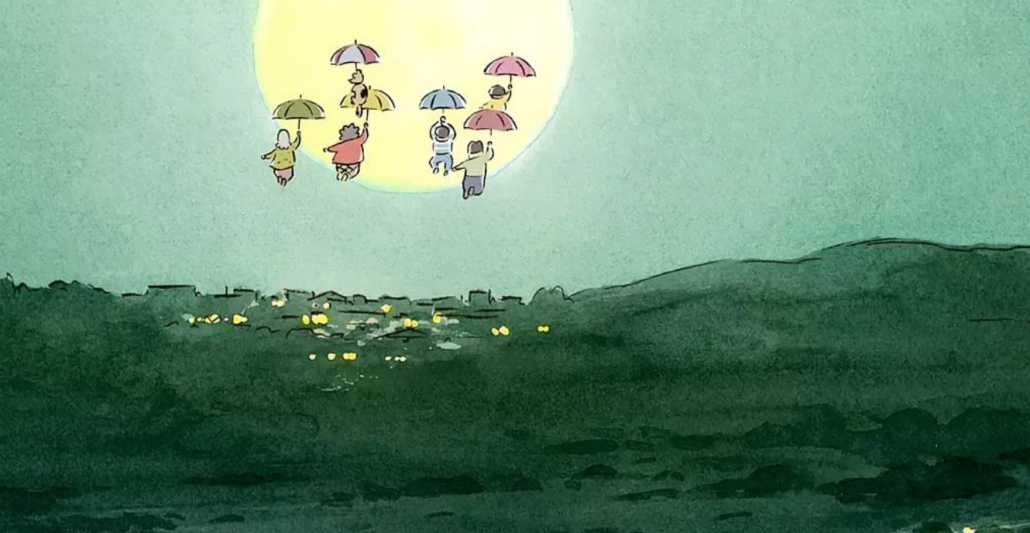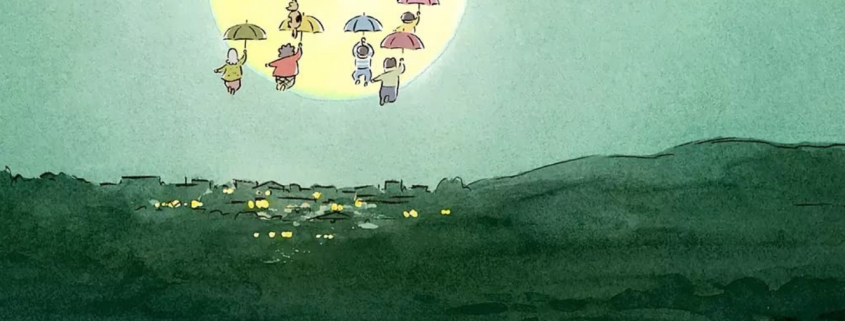Four Studio Ghibli movies to watch in anticipation of “Earwig and the Witch”

Studio Ghibli is an illustrious Japanese animation studio that has given audiences magical cinematic moments such as the Oscar-winning film “Spirited Away,” “Princess Mononoke” and “My Neighbor Totoro.” Its latest film “Earwig and the Witch” made its premiere Oct. 18 in France at the Grand Lyon Film Festival and is set to broadcast in Japan in December. It is a children’s fantasy story, based on a book by Diana Wynne Jones. She also wrote the source material for another popular Ghibli movie, “Howl’s Moving Castle,” directed by Hayao Miyazaki. Although “Earwig and the Witch” has elements that fit within the identity of Studio Ghibli’s most famed films, its 3D animation style might stand out to those familiar with the animation studio’s other popular feature films. Moreover, it is directed by Gorou Miyazaki, a name you might be unfamiliar with.
This is because Studio Ghibli’s highest-grossing films globally are all associated with one director, Hayao Miyazaki, who is often seen as representative of the studio. As a founder and having directed around half of the feature films put out by the studio, Miyazaki certainly merits this status. However, this leads to creating a homogenous identity built around a singular personality that is far from its reality as a 35-year-old animation studio built on the collaborative creative faculties of its varied creators.
If you’re anticipating their latest project and want to explore the diverse cinematic voices of this historied animation studio, check out these four Studio Ghibli movies from four different directors who aren’t Hayao Miyazaki. In 2019, HBO Max acquired the rights to stream all of the Ghibli feature films, and since this service is free to USC students, you can watch all these movies right now!
“From Up on Poppy Hill” (2011)
Fueled by a sense of nostalgia with catchy pop songs scattered throughout, “From Up on Poppy Hill” paints an enthralling portrait of the port city Yokohama in the ’60s. This feature film is the second that Gorô Miyazaki has directed and his first collaboration with his father, Hayao, who wrote the screenplay. A period piece set in Yokohama before the 1964 Tokyo Olympics, the movie features a charmingly earnest romance that follows its protagonists, Shun Kazama (Jun’ichi Okada) and Umi Matsuzaki (Masami Nagasawa), in their attempt to save The Latin Quarter, an eccentric and quirky clubhouse at their high school. It is an endearing drama that uses its historical setting to explore the value of the past in an increasingly modernizing society, which is rather fitting as it is built on the collaboration of filmmakers from two distinct generations.
“The Secret World of Arrietty” (2010)
There is something distinctly fascinating about seeing normal household items such as a clothespin or sellotape being recycled and repurposed by these four-inch tall Borrowers that sucks you into the intricately crafted tiny ecosystem. If you’re tired of being trapped indoors during the pandemic, this movie is perfect for you as it uses its magical realism to urge you to re-examine the surroundings you’ve taken for granted.
“The Secret World of Arrietty” is the directorial debut of Hiromasa Yonebayashi, who previously worked as a key animator on a number of Ghibli movies. The film uses its animation to create a sense of wonder out of the mundane.
The fantasy tale centers around a family of Borrowers, one of the last few remaining in the world, who survive on borrowed human-household goods and food and live under the floorboards of a fairly conventional suburban house. The protagonist is the youngest borrower Arrietty (Mirai Shida), who forms an unlikely and dangerous friendship with Shô (Ryûnosuke Kamiki), a boy who inhabits the household. Zooming into the nooks and crannies of the house, watching the Borrowers journey from the living room to the kitchen, is like viewing them traverse an intensely dangerous obstacle course.
“Whisper of the Heart” (1995)
If you’re fond of tuning into “Lo-fi hip-hop radio” livestreams on YouTube, you might already be familiar with the protagonist of this movie, Shizuku Tsukishuma (Yoko Honna). The poster of this film, with its sprawling fantasy city and its protagonist flying in the sky with an anthropomorphic cat, is rather misleading. Unlike the grand-scale fantasy stories Studio Ghibli is known for, this coming-of-age narrative is grounded in reality. Yet, it will fill you with awe as you follow Shizuku’s discovery of a quaint antique store with a musical cuckoo clock and a mysterious old cat-doll which kick-starts her journey to actualize her passions as a young writer. Unfortunately, the creation of this hopeful movie is tinged with melancholy as its debutant director, Yoshifumi Kondô, passed away in 1998, a few years after its release.
Kondô worked as a character designer and animation supervisor for previous Ghibli movies. His prowess with detailed character animation shines in this movie’s attention to detail, which adds to its grounded tone. Be prepared to have “Country Roads” in your head as this film features three distinct renditions of it, embodying its ethos.
“My Neighbours The Yamadas” (1999)
With many universities going virtual this year due to the pandemic, a lot of students are finding themselves attending school from home and staying with their families. Familial relationships carry a wide range of emotional experiences, and this movie aims to capture that feeling. It is a slice-of-life film built around the eccentric middle-class Yamada family, living in Tokyo. Though the film does not have a connected storyline, it is a collection of light-hearted vignettes of family life.
The director of this film, Isao Takahata, was also one of the founders of Studio Ghibli, who passed in 2018. It might seem unexpected that this simple collection of stories was one of the studio’s most experimental works of animation. It is their first fully digitally animated film, which disrupted the studio’s usual hand-drawn working conventions as Takahata wanted to create its distinctive watercolor visual style. On the one hand, the film is uniquely Japanese, offering you a glimpse into the Tokyo lifestyle, yet it simultaneously speaks to universal shared experiences.

